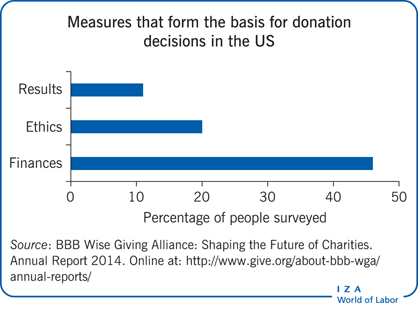Elevator pitch
Charity rating agencies often focus on overhead cost ratios in evaluating charities, and donors appear to be sensitive to these measures when deciding where to donate. Yet, there appears to be a tenuous connection between this widely-used metric and a charity’s effectiveness. There is evidence that a focus on overhead costs leads charities to underinvest in important functions, especially skilled workers. To evaluate policies that regulate overhead costs, it is necessary to examine whether donors care about overhead costs, whether they are good measures of charity effectiveness, and what effects a focus on overhead costs has on charities.

Key findings
Pros
Overhead cost ratios are easy to compare across charities relative to other metrics.
Many third-party rating agencies rely on overhead cost ratios when evaluating charities, at least in part.
Many donors report relying heavily on overhead cost metrics when choosing among charities.
Donors exhibit strong distaste for charities that report high overhead costs, even when there is no relationship with the charity’s effectiveness.
Cons
Donors’ focus on overhead costs can lead to counterproductive outcomes for charities, such as underinvestment in staff and administrative support, which hamper their effectiveness.
Measuring the quality or effectiveness of a charity can be difficult, and overhead cost ratios are often a poor metric for judging a charity.
Imposing legal regulations to limit overhead costs can create large burdens for charities.
Charities can find it difficult to compete for skilled labor due to donors’ and regulators’ desire to minimize overhead costs.